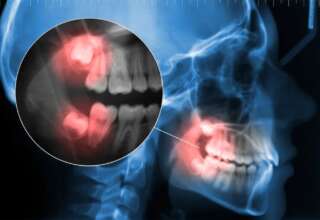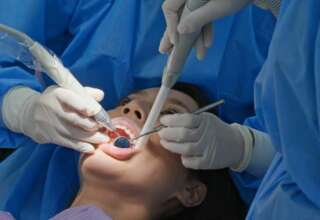
Among the medical treatments for Peyronie’s Disease in Men, injections are the most common. In this procedure, providers first inject lidocaine into the penis, which will numb it and make it more comfortable. The provider then wraps the penis in a pressure bandage to prevent swelling and bruising. After the procedure, the patient can remove the bandage, but he or she should avoid sexual activity for 24 hours. Another type of treatment for Peyronie’s disease in men is the use of verapamil, a calcium channel inhibitor. This drug has been shown to reduce pain early and may be a suitable treatment for patients who are suffering from the disease.
Symptoms of Peyronie’s Disease in Men may start with mild achy pain during erections, but can be more severe if they are present over time. Most men don’t recall the exact cause of the injury, so they may not even realize that they’ve contracted the disease. But the depressed moods associated with the condition can be a sign of a broader health problem.
Symptoms and treatment for Peyronie’s disease in men may include an ultrasound of the penis to evaluate the blood flow and scar tissue. If the condition is mild, medication can be injected into the penis to achieve an erection, but always consider the many side effects of ED medications. Further, a biopsy may be done to rule out other conditions. In addition, treatment may involve surgery or other medical measures. But for now, men should see a medical professional to avoid the disease and its painful symptoms.
Non-surgical treatment of Peyronie’s disease in men may be the best option if the condition is causing anxiety and intractable sexual dysfunction. While some of the oral treatments for Peyronie’s disease in men have no proven benefit, many men find it unacceptable to accept minor penile curvature without treatment. The treatment options include potaba, colchicine, Vitamin E, and marketed herbal remedies.
The first symptom of Peyronie’s disease in men is a bent penis, but the condition can also manifest as a divot or hourglass deformity. In advanced cases, palpable plaque – scar tissue that lines the penis’ outer covering – may even calcify like a bone. In severe cases, pain with an erection is believed to be caused by active inflammation in the plaque. It usually resolves with time.
The best treatment for Peyronie’s disease is an injection. The medication Xiaflex breaks down the buildup of collagen in the penis. It also weakens scar tissue. But this method is not available to everyone. Xiaflex is not available in every country. For patients who have had lumps and an erection curvature of at least 30 degrees, Xiaflex is the only FDA-approved medication for Peyronie’s disease in men.
Although the exact cause of Peyronie’s disease is not known, some researchers believe that the penis develops a scar when it is injured or bent. Interestingly, 80% of men don’t remember the exact incident that caused the penis to change, but this isn’t surprising since a normal penis can sustain small, unnoticed injuries during sexual intercourse. In these men, too much scar tissue can develop, and the condition can affect their ability to sex and erection.
Peyronie’s disease in men affects men differently. Symptoms of the disease include pain during erections, inability to maintain an erection for sex, and decreased self-confidence. In severe cases, surgery may be necessary. There is no cure for Peyronie’s disease, but treatment options may include injections of various medicines into the plaques. Radiation therapy may be used to treat the pain, but it has mixed results.
To diagnose the condition, your doctor will first do a physical exam. He will examine you and feel for any scar tissue. If the symptoms are recent, he may recommend that you have an ultrasound. Alternatively, the doctor may decide to inject medication into the penis to make it erect. A biopsy will also be necessary to rule out other conditions. Your doctor will discuss treatment options and recommend a course of action based on the severity of your symptoms and the specific signs and symptoms of Peyronie’s disease in men.
Surgical treatment options for Peyronie’s disease in men include penile implants, which are devices that replace spongy tissue during erections. These devices can be FDA-approved and used to treat Peyronie’s disease in men. However, these treatments are not without risks and are not suitable for every patient. They can cause additional problems related to sexual function and may even lead to a surgical procedure.
Surgery is often recommended for severe cases of Peyronie’s disease. This procedure removes plaque and scar tissue and straightens the penis. However, it is not a cure for Peyronie’s disease and ED. Patients should avoid sexual intercourse for six weeks after surgery to minimize the risk of infection. Once the disease has stopped, medication may be effective. The medications prescribed by Dr. Mills may have side effects that include numbness, erectile dysfunction, and ED.
Treatment for Peyronie’s disease in men varies, depending on severity and time since the first symptoms appeared. If the condition is mild, it may require no treatment. In mild cases, however, surgery is necessary if the disease prevents a man from having sexual intercourse. But if you are experiencing severe pain and an inability to have sex, a doctor might recommend surgery. The procedure is not usually recommended for men who can still have sex.
Penile inflammation and pain usually resolve on their own over six to 18 months. However, the penile pain may last for a few years after the initial onset. Patients may experience erectile dysfunction, scar tissue, or both. In either case, early treatment can increase the chances of recovery and prevent the condition from worsening. Men should seek medical attention as soon as symptoms start bothering them. When this happens, sex may become difficult.
Treatment for Peyronie’s disease in men involves a combination of medical care and lifestyle changes. A health care provider can diagnose Peyronie’s disease through a physical exam and may give medications to make the penis more erect. In some cases, MRI may be necessary to determine the exact location of the plaques and calcium buildup. If the symptoms persist, the doctor may suggest other medical treatment options.













